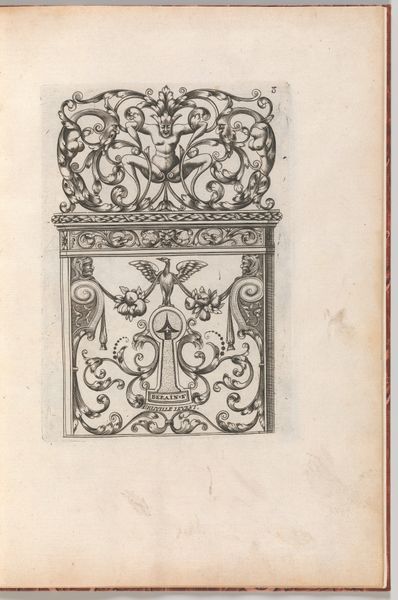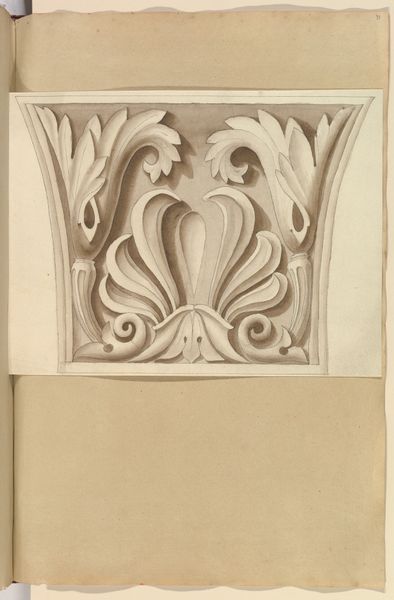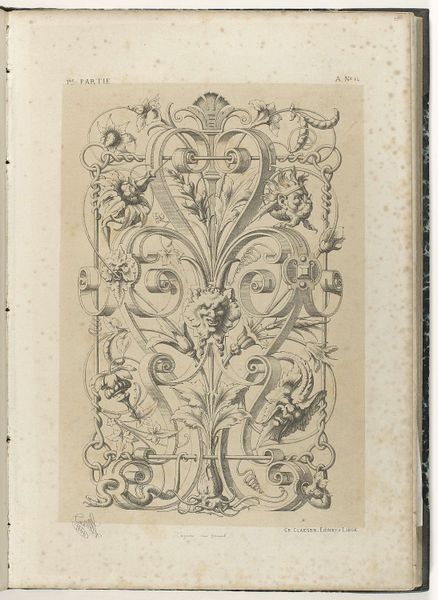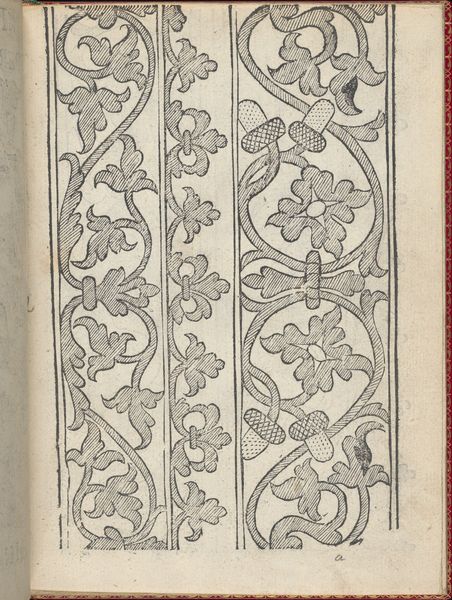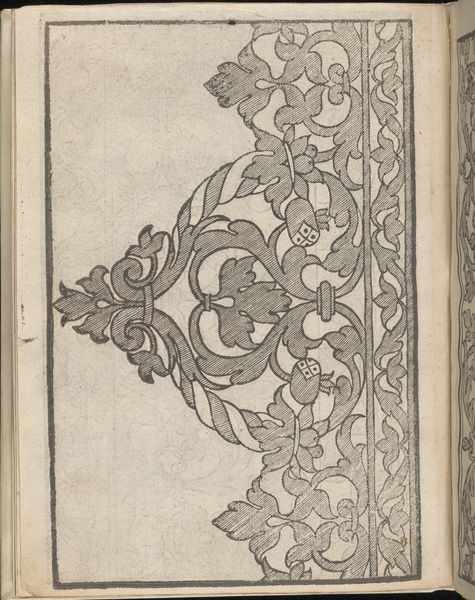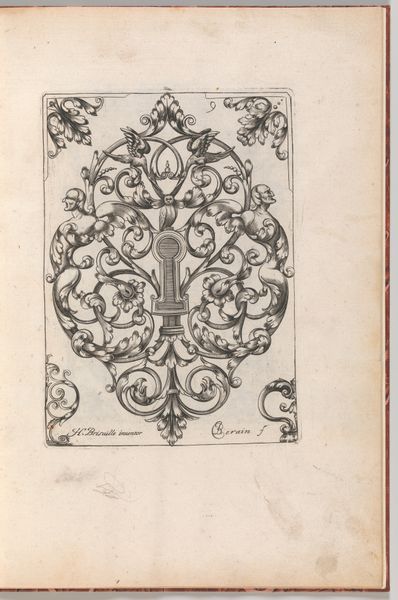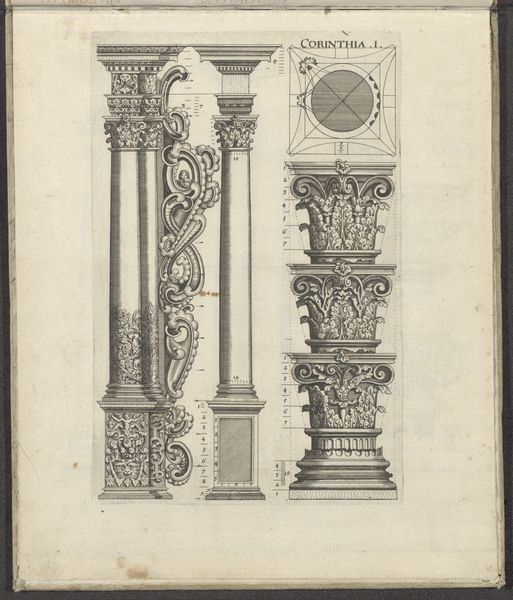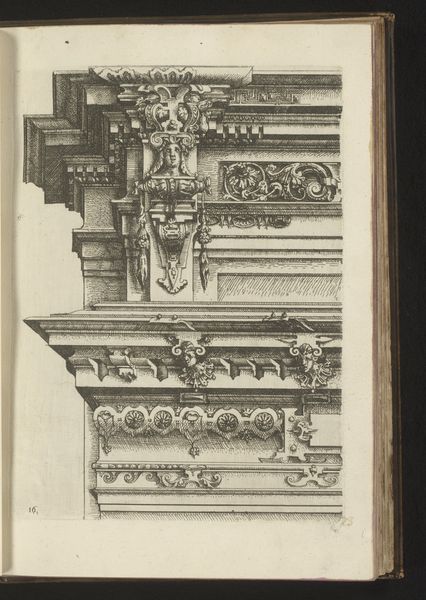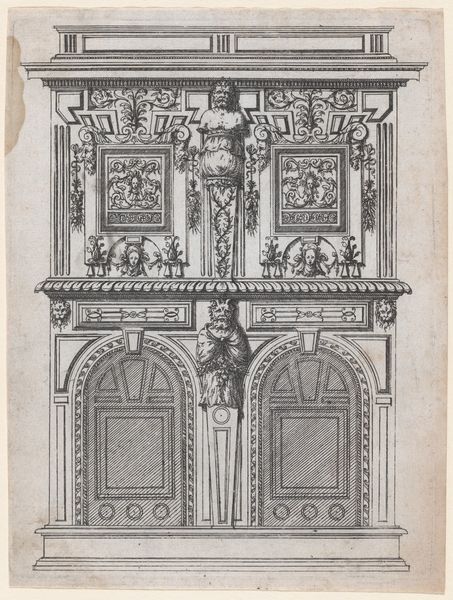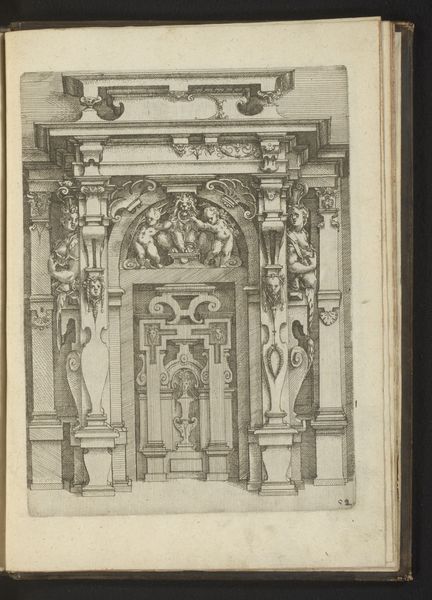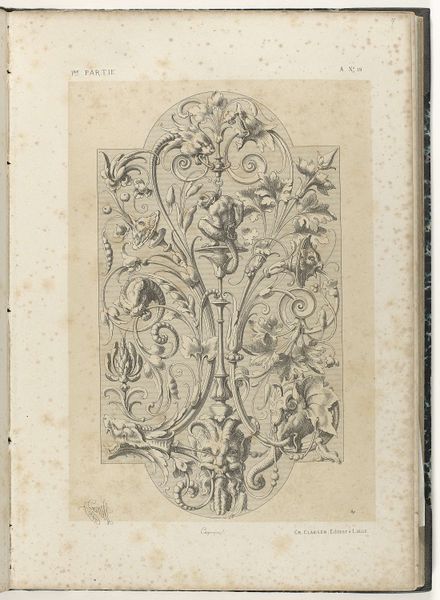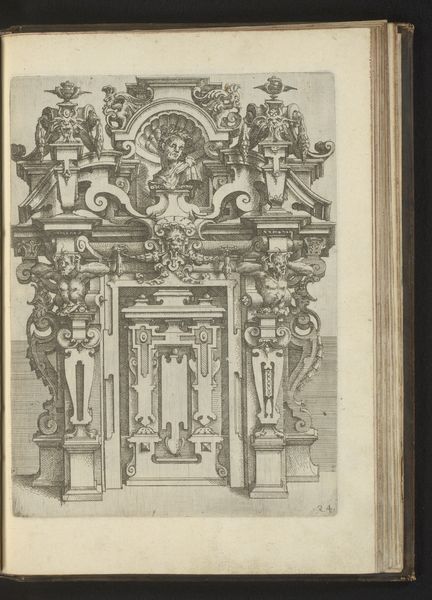
Capital of a Column with Anthemion 1845 - 1870
0:00
0:00
drawing, paper
#
portrait
#
drawing
#
classical-realism
#
paper
#
classicism
#
watercolor
Dimensions: sheet: 16 3/4 x 11 7/16 in. (42.5 x 29 cm)
Copyright: Public Domain
Curator: I'm immediately drawn to the precision and the almost sepia-toned light in this drawing. It exudes a very formal, stately quality, even though it’s just a fragment. Editor: Indeed. We're looking at a page featuring "Capital of a Column with Anthemion," dating from between 1845 and 1870, created by Alfred Henry Forrester. This artwork, housed at the Metropolitan Museum of Art, presents a close-up of architectural detail, meticulously rendered in watercolor on paper. It makes me think about power and those who have it...the cultural obsession of Classicism, its appropriation, really, by different regimes. Curator: Absolutely, I see the anthemion motif—that stylized honeysuckle—as more than mere decoration. It embodies concepts of regeneration and cyclical renewal that resonate deeply across cultures and eras. Think of its prominence in funerary art and its recurring use during periods of rebuilding, whether literal or ideological. The Victorians really gravitated towards the aspirational idealism inherent in classical aesthetics, particularly the symmetry and presumed 'purity' of ancient forms. It also conveniently overlooks a ton of social complexities. Editor: The anthemion’s presence here as a column's capital reminds me of the weight and responsibility it carries. Visually, it seems almost too delicate to support the immense structure it would have originally crowned. And considering it in relation to architecture itself—what structures of power and hierarchy does this emblem literally prop up? What values are upheld and conversely, which ones are suppressed by its very existence? Curator: The fact that Forrester chose to isolate and carefully document this element implies an intense engagement with its historical significance and the narratives it carried into the 19th century. His classicizing aesthetic feels both reverent and slightly removed. Editor: Removed, yes—that feels spot on. There’s something about capturing an image rather than creating anew that opens up other perspectives, it invites critique and deconstruction. I appreciate it for making me think of how symbols adapt and are then readapted through very different contexts. Curator: It's an object that offers layered meanings for today. It prompts conversations about cultural continuity but also critical reassessments of embedded power dynamics.
Comments
No comments
Be the first to comment and join the conversation on the ultimate creative platform.
